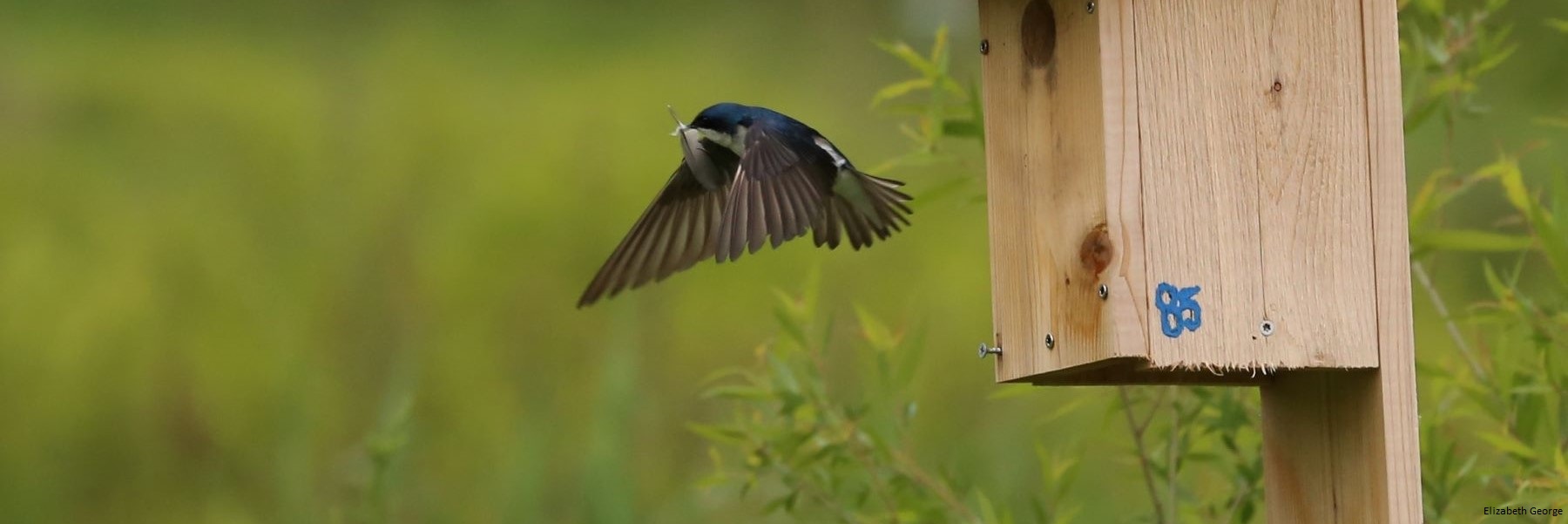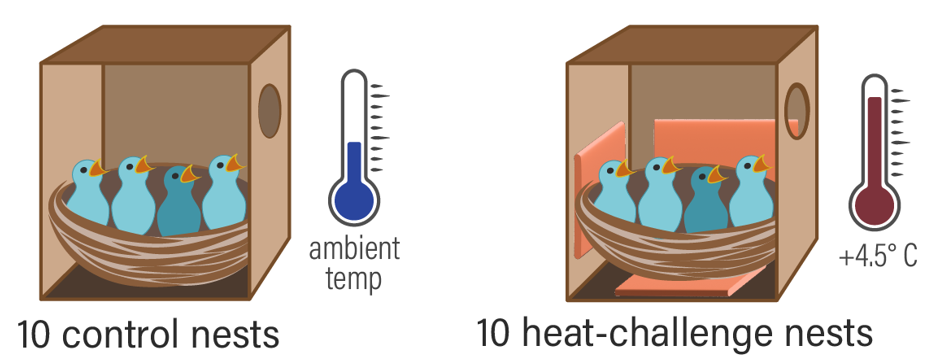Increasingly frequent and intense heatwaves generate new challenges for many organisms, yet, at least in endotherms, we are still only beginning to understand one critical component of predicting resilience: exactly how do wild animals cope with sub-lethal heat?
We use air-activated warmers to generate naturalistic heatwaves, measure how free-living nestling tree swallows react, and quantify the valence of those effects (Woodruff et al. 2023, 2024). In response to mild heat, nestlings pant more and huddle less, but we found no effects on a battery of physiological traits. Taking an organismal perspective, we found general resilience to a heatwave that may, in part, stem from behavioral buffering and acclimation. When we exaggerated this heat challenge while still staying well under lethal limits, we again found robust behavioral responses, including movement to cooler microclimates within the nest. With more heat, though, heat shock protein (HSP) gene expression is elevated, alongside widespread transcriptional differences related to antioxidant defenses, inflammation, and apoptosis. These heat responses appear to be adaptive: heat-exposed nestlings, particularly those exposed to milder temperatures, were more likely to recruit into the breeding population.
Our approach provides a mechanistic framework that we hope will improve understanding of species persistence in the face of climate change. Ongoing projects test the hypothesis that experiential and evolutionary history with sub-lethal heat shapes whether behavioral responses are sufficient for coping with heat – essentially asking whether behavior is 'special' or just one of many team players in the phenotypic response to heat tolerance or heat resilience. This research is urgent because most existing work focuses on species-specific heat responses, leaving uncertainty on the scope of individual differences, plasticity, and population variation, particularly in more mesic environments where biodiversity loss is rampant. This knowledge gap has been noted repeatedly by leaders in the field of physiological ecology, and yet it still stands (e.g. Muñoz 2022 Evol). Stay tuned to learn more about how heat resilience is built as an emergent property of variation at lower levels of biological organization!



